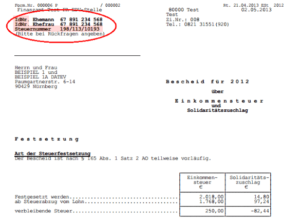

Revenue minus expenses equals profit: EÜR profit calculations only take into account the amounts that are actually generated by your company. This does mean, however, that any advance payments – ingoing or outgoing – are fully taxable. Unlike with double-entry bookkeeping, obligations that arise or are settled via services don’t matter when preparing an EÜR. For this method of profit determination, all that matters are the actual amounts that flow in and out of the business’s bank accounts and the cash amounts that are payed or received. The basis of the EÜR is the cash inflow and outflow principle. It instead refers to Article 4(3) of the German Income Tax Act ( Einkommensteuergesetz, or EStG), which defines the EÜR as a method with which taxpayers can subtract their operating expenses from their revenue to determine their profits. The 4/3-Rechnung has nothing to do with any sort of four-thirds calculation. In Austria, the EÜR is also called the Einnahmen-Ausgaben-Rechnung (which differs from the German EÜR in several aspects) or the 4/3-Rechnung.

The Einnahmenüberschussrechnung is a simplified type of profit calculation. But what exactly does the EÜR entail? Read on to find out what the EÜR encompasses, who may choose to prepare one and what should be kept in mind when doing so.

Entrepreneurs that are not obligated to prepare a balance sheet at the end of year must instead prepare an Einnahmenüberschussrechnung, or EÜR for short.


 0 kommentar(er)
0 kommentar(er)
